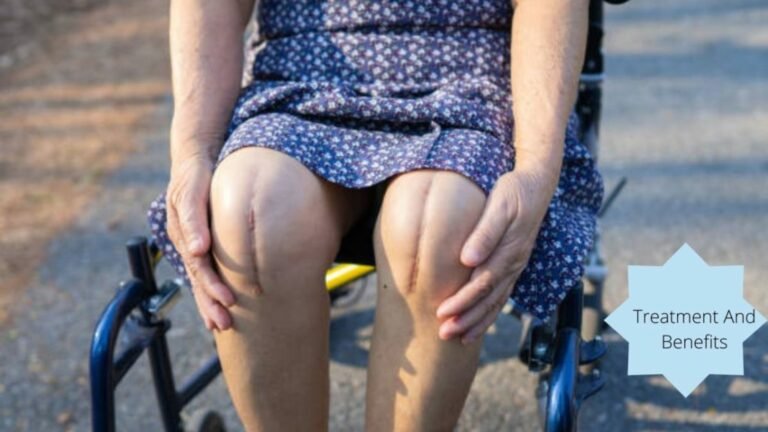Decoding Buttock Pain After Hip Replacement: A Comprehensive Guide

Hip replacement surgery is a life-changing procedure that can alleviate debilitating pain and restore mobility for individuals suffering from severe hip joint damage or arthritis. While the surgery is generally successful in improving quality of life, some patients may experience unexpected complications, including buttock pain after the procedure. This discomfort can be concerning and frustrating, especially during the recovery process when patients expect to experience relief from their previous hip issues.
Understanding the potential causes of buttock pain after hip replacement is crucial for proper management and treatment. In this comprehensive guide, we’ll explore the various factors that can contribute to this postoperative discomfort and discuss strategies for alleviating and preventing this uncomfortable condition.
1. Surgical Approach and Muscle Trauma
The surgical approach used during hip replacement can play a significant role in the development of buttock pain after the procedure. Two common approaches are the posterior approach and the anterior approach, each with its own potential implications for postoperative pain.
Posterior Approach: In this method, the surgeon accesses the hip joint through an incision in the back of the hip and buttock area. During this process, the muscles and tendons attached to the back of the hip and buttock may be detached or stretched, potentially leading to trauma, inflammation, and subsequent pain in the buttock region.
Anterior Approach: This technique involves accessing the hip joint through an incision in the front of the hip, often resulting in less muscle and tendon disruption. However, some patients may still experience buttock pain due to the proximity of the surgical site and the potential for muscle irritation or swelling in the surrounding areas.
2. Sciatic Nerve Irritation
The sciatic nerve is the largest in the human body, running from the lower back, through the buttock area, and down the legs. During hip replacement surgery, there is a risk of irritation or compression of the sciatic nerve, which can manifest as radiating buttock pain, numbness, or tingling sensations down the affected leg.
Factors that may contribute to sciatic nerve irritation include swelling, hematoma (localized blood clot), or scar tissue formation in the proximity of the nerve. Additionally, certain surgical approaches or positioning during the procedure can potentially stretch or compress the sciatic nerve, leading to postoperative discomfort.
3. Bursitis
Bursae are small, fluid-filled sacs that provide cushioning and reduce friction between muscles, tendons, and bones. During hip replacement surgery, the bursae around the hip and buttock area may become irritated or inflamed, resulting in a condition known as bursitis.
Trochanteric bursitis, which affects the bursa located near the bony prominence of the hip (the greater trochanter), is a common cause of buttock pain after hip replacement. This condition can be exacerbated by excessive pressure or friction on the affected area, prolonged immobility, or even the surgical procedure itself.
4. Heterotopic Ossification (HO)
Heterotopic ossification (HO) is a complication that can occur after hip replacement surgery, where bone tissue forms in the surrounding soft tissues, such as muscles and tendons. This abnormal bone growth can lead to stiffness, restricted range of motion, and potentially buttock pain if the bone formation occurs in the gluteal muscle region.
Risk factors for HO include certain medical conditions, such as genetic disorders or neurological injuries, as well as previous cases of HO. Treatments for HO may involve anti-inflammatory medications, radiation therapy, or surgical removal of the excess bone tissue in severe cases.
5. Implant Positioning and Leg Length Discrepancy
Proper positioning and alignment of the hip implant during surgery are crucial for optimal function and minimizing postoperative complications. In some cases, improper implant positioning or a leg length discrepancy (where one leg is longer than the other) can lead to muscle imbalances, altered biomechanics, and subsequent buttock pain.
Leg length discrepancies can cause compensatory muscle strain and tension in the buttock area as the body attempts to adjust to the imbalance. Additionally, improper implant positioning may alter the biomechanics of the hip joint, putting additional stress on the surrounding muscles and tendons, and leading to buttock discomfort.
6. Postoperative Hematoma or Seroma
A hematoma is a localized collection of blood that can form after surgery, while a seroma is an accumulation of fluid. These fluid collections can occur in the buttock area after hip replacement surgery and may cause pain, swelling, and discomfort.
Hematomas and seromas can result from bleeding during the surgical procedure or as a complication of the healing process. If left untreated, they may become infected or exert pressure on surrounding structures, potentially contributing to persistent buttock pain.
7. Referred Pain from Adjacent Structures
In some cases, buttock pain after hip replacement may not originate from the hip or buttock region itself but rather from adjacent structures, such as the lower back or pelvic region. This phenomenon, known as referred pain, can occur due to the complex network of nerves and muscles in the hip and pelvic areas.
Conditions like degenerative disc disease, spinal stenosis, or pelvic floor muscle tightness can refer pain to in the buttock area, mimicking the discomfort associated with hip replacement surgery. Proper evaluation and diagnosis are crucial to identify the underlying cause and provide appropriate treatment.
Managing and Treating Buttock Pain After Hip Replacement
If you experience persistent or severe buttock pain after hip replacement surgery, it’s essential to consult with your orthopedic surgeon or healthcare provider. They can perform a comprehensive evaluation, including imaging tests or physical examinations, to identify the underlying cause and develop an appropriate treatment plan.
Treatment options may include:
1. Medications: Anti-inflammatory drugs, pain relievers, or muscle relaxants may be prescribed to reduce inflammation, alleviate pain, and promote healing.
2. Physical Therapy: A tailored physical therapy program can help strengthen the muscles around the hip and buttock area, improve the range of motion, and correct any imbalances or compensatory patterns that may be contributing to the pain.
3. Injections: In cases of bursitis or nerve irritation, corticosteroid injections can help reduce inflammation and provide temporary relief from buttock pain.
4. Surgical Intervention: In severe or persistent cases, surgical intervention may be necessary, such as revision surgery to correct implant positioning, remove excess bone growth (HO), or address other underlying issues.
Prevention and Self-Care Strategies
While some causes of buttock pain after hip replacement may be unavoidable, there are several preventive measures and self-care strategies that can help minimize the risk and promote a smoother recovery:
1. Follow postoperative instructions: Adhering to your surgeon’s recommendations for activity levels, exercise, and weight-bearing restrictions can prevent further injury or complications that may contribute to buttock pain.
2. Practice proper posture and body mechanics: Maintaining good posture and utilizing proper body mechanics during daily activities can reduce strain on the hip and buttock muscles, minimizing the risk of pain and discomfort.
3. Apply cold therapy: Using ice packs or cold therapy can help reduce inflammation and alleviate pain in the buttock area during the initial recovery phase.
4. Engage in gentle exercises: Once approved by your healthcare provider, incorporating gentle stretching and strengthening exercises can help improve flexibility, strengthen the muscles around the hip and buttocks, and promote healing.
5. Maintain a healthy weight: Carrying excess weight can put additional stress on the hip and buttock muscles, potentially contributing to pain and discomfort. Maintaining a healthy weight through a balanced diet and exercise can alleviate this strain.
6. Communicate with your healthcare team: If you experience persistent or worsening buttock pain, it’s crucial to communicate openly with your healthcare team. They can provide guidance, adjust your treatment plan, and address any underlying concerns promptly.
Conclusion
Buttock pain after hip replacement surgery can be a frustrating and concerning experience, but understanding the potential causes is the first step toward effective management and treatment. By working closely with your healthcare team, adhering to postoperative instructions, and incorporating preventive measures, you can minimize the risk of buttock pain and enjoy a smoother recovery journey.
Remember, every individual’s experience may vary, and it’s essential to seek prompt medical attention if you experience severe or persistent discomfort. With proper care and a proactive approach, you can overcome this challenge and regain the mobility and quality of life that hip replacement surgery promises.
Justin Lian
View All By Justin






